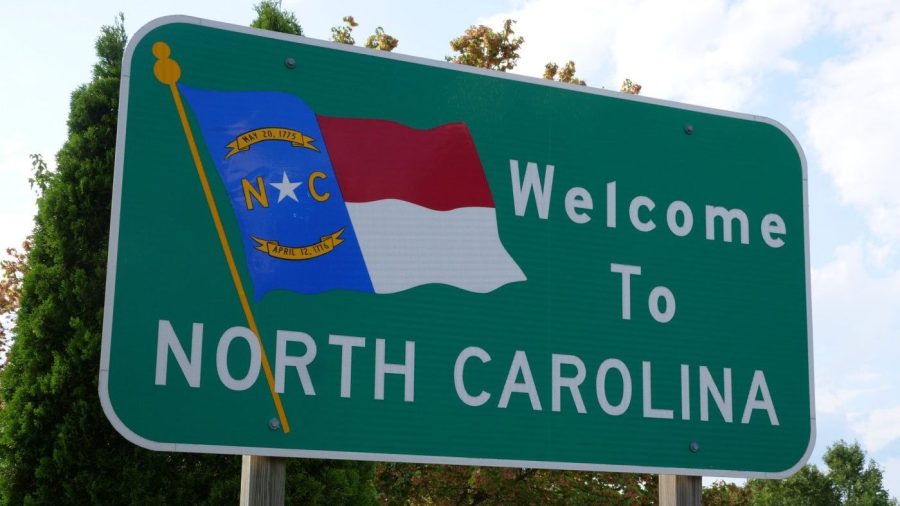
In the foothills of North Carolina’s Blue Ridge Mountains, a nondescript white clapboard house has become one of the most popular restaurants in rural Stokes County: Luna’s Mexican Kitchen.
This is Trump country (he got 79 percent of its votes last year), overwhelmingly white, and favored the president by nearly 82 percent in 2024. Yet, stereotypes notwithstanding, Luna’s owner, Angel Hernandez, 35, says “there are no words to explain our reception. Everyone was very nice. Everyone helped me.”
After 18 months in business, patrons come from neighboring Surry County and as far as Virginia for Luna’s pan-Mexican cuisine. The weekly Stokes News featured the restaurant in its “Loaves and Dishes” column.
Hernandez, a stocky man dressed in a black Cinco de Mayo T-shirt, spoke as music from a Colombian radio station filled the small restaurant.
Twenty years ago, on the advice from an uncle living in the U.S., the teenager immigrated from northern Mexico to North Carolina’s Piedmont region. Hernandez joined “The Great Latino Migration,” a historic movement that brought millions of Spanish-speaking migrants to the Southeast.
After years working various area jobs, Hernandez wanted to start a restaurant and so began driving in Stokes and Surry Counties. “I saw this little spot,” he recalled. “It was so cute.”
The restaurant is a family affair, named for his daughter, Luna, one of his two American-born children. His young son helps out when not in school. His wife Andrea’s name appears on the restaurant’s blackboard specials (“Andrea’s Burrito”). She is also an apartment manager.
Hernandez and his restaurant exemplify a much larger trend, according to Rodrigo Dorfman, an artist, documentarian and a founder of a new magazine titled “Nuevo South.”
Dorfman says the Southeast’s face is changing — again — with a browner complexion and ubiquitous Spanish language and accent.
Hispanic migration here began around 1990, when farm workers, mostly single men, began stopping for work on the way from Georgia to Virginia’s fields and orchards and even to New England. U.S. recruiting brought them to North Carolina, where they settled with their families.
Dorfman’s personal journey to the Tar Heel State was quite different. He accompanied his mother and father, novelist and playwright Ariel Dorfman, who escaped Chile’s 1973 right-wing military coup and joined the faculty of Duke University, with its robust Latin American Studies program.
Recently, more than 50 people, mostly Hispanic, including several small-business owners, attended Dorfman’s magazine launch party in a skylit gallery on Duke’s campus. On display was his art, combining photography, painting and AI, which he calls “docu-painting.” Proceeds supported “Nuevo South.”
The quarterly’s first, 144-page issue received a $17,400 City of Durham grant, and is printed in full color on heavy, glossy stock and perfect binding. It is “strategically bilingual,” Dorfman says. There is artwork by young community interns, plus professional portraits of everyday people. Features range from Latina entrepreneurs to an aging drag queen.
In the social media age, many magazines are jettisoning print and going digital-only. Launching a physical magazine seems counterintuitive, even countercultural. But as Dorfman explains, “We live in the digital world because that’s how we communicate with our loved ones far away — and we also value that which we can touch, that which physically brings us together.”
While many Cubans, Venezuelans and Puerto Ricans settled in Florida, a potentially bigger story of Hispanic immigration to the southeast is emerging, with “Nuevo South” its most recent milestone. Dorfman says his Durham-based magazine aims to preserve that saga.
“We need to find a way to share our narratives without erasing other narratives in the process,” he said, speaking of their integration in a new land.
Which Dorfman is trying to do. His 2024 PBS “POV” series film is titled “Bulls and Saints,” about Mexican migrants to eastern North Carolina bringing many customs, including bull riding, the focus of a regular summer communal festival drawing thousands from the Southeast.
The magazine’s “Duramitas” cover story focuses on Durham. The city’s Hispanic community has grown exponentially since 1986, when barely a dozen people benefited from President Ronald Reagan’s 1986 amnesty for 2.7 million undocumented immigrants. The community has grown 500 percent since 2005.
Today, financial institutions and money transfer outlets accompany numerous convenience stores, food trucks, nail salons, lawn services, car parts and used tire businesses, takeout taquerias and restaurants (several specializing in Honduran and Peruvian cuisine) and dozens of construction companies. Migrant children have joined the professional ranks, and Hispanics serve on Durham’s city council.
“Pincho Loco,” a favorite ice cream store near Duke’s campus, encapsulates the Hispanic success story. It is run by a Salvadorean family whose son is in the U.S. military and whose daughter is a junior at Duke.
However, increased Latino presence brings increased concern about the Trump administration’s immigration crackdown. “We know that the undocumented immigrant community is the most at risk,” Ivan Almonte, a longtime immigrant organizer told WUNC-FM radio. “We’re mobilizing the community across the state. It’s important to be part of a group of community organizers because each county, each city, is different.”
Almonte’s Durham Rapid Response (Respuesta Rápida de Durham) serves the estimated 325,000 people who lack legal status in North Carolina. Most are Hispanics in construction, agriculture and service industries, according to the Office of State Budget and Management.
“After 30 years of settlement and a multi-generational presence firmly rooted in the South,” Dorfman says, “we’re trying to go from crisis mode to constructive mode. We are now facing this threat, but we can’t fall back into crisis mode because we will lose everything we have built.”
Mark I. Pinsky is a Durham, N.C.-based journalist and author.












